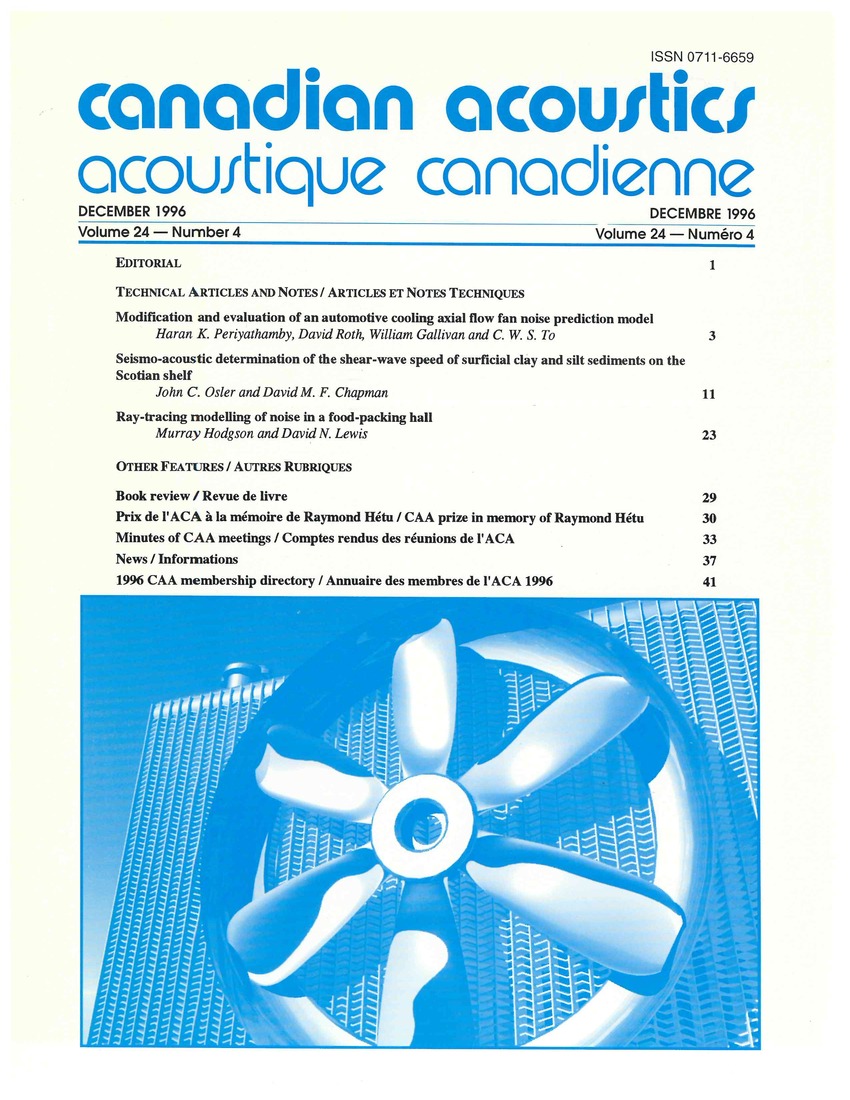Ray-tracing modelling of noise in a food-packing hall
Keywords:
Acoustic noise measurement, Cost effectiveness, Noise abatement, Noise ray tracing modelAbstract
By modelling workroom sound fields, the influence of building geometry, surface absorption, machine layout, sound power and directivity on noise at operator positions can be evaluated. This can be invaluable at the design stage of new projects or when assessing the most cost-effective approach to control noise in an existing installation. The approach adopted here is to predict the octave-band sound-propagation curves for a single noise source in the particular workroom using ray tracing. Curves are predicted for propagation in different directions within the building and for different acoustical treatments. They are approximated by one or two straight-line segments whose slope(s) are determined. A separate program is then used to compute the combined effect of all machine-noise sources in the workroom at positions on a 1-m grid, using the slope(s) and the applicable environmental correction factor. These techniques have been successfully applied to a number of major projects. Here, a case study is presented which illustrates a design-stage application to a new packing hall, which was modelled to evaluate the effects of increasing the ceiling absorption over all or part of the ceiling. The workroom is described and the predictions done are detailed. Also discussed are lessons learned with respect to workroom modelling.Additional Files
Published
How to Cite
Issue
Section
License
Author Licensing Addendum
This Licensing Addendum ("Addendum") is entered into between the undersigned Author(s) and Canadian Acoustics journal published by the Canadian Acoustical Association (hereinafter referred to as the "Publisher"). The Author(s) and the Publisher agree as follows:
-
Retained Rights: The Author(s) retain(s) the following rights:
- The right to reproduce, distribute, and publicly display the Work on the Author's personal website or the website of the Author's institution.
- The right to use the Work in the Author's teaching activities and presentations.
- The right to include the Work in a compilation for the Author's personal use, not for sale.
-
Grant of License: The Author(s) grant(s) to the Publisher a worldwide exclusive license to publish, reproduce, distribute, and display the Work in Canadian Acoustics and any other formats and media deemed appropriate by the Publisher.
-
Attribution: The Publisher agrees to include proper attribution to the Author(s) in all publications and reproductions of the Work.
-
No Conflict: This Addendum is intended to be in harmony with, and not in conflict with, the terms and conditions of the original agreement entered into between the Author(s) and the Publisher.
-
Copyright Clause: Copyright on articles is held by the Author(s). The corresponding Author has the right to grant on behalf of all Authors and does grant on behalf of all Authors, a worldwide exclusive license to the Publisher and its licensees in perpetuity, in all forms, formats, and media (whether known now or created in the future), including but not limited to the rights to publish, reproduce, distribute, display, store, translate, create adaptations, reprints, include within collections, and create summaries, extracts, and/or abstracts of the Contribution.


